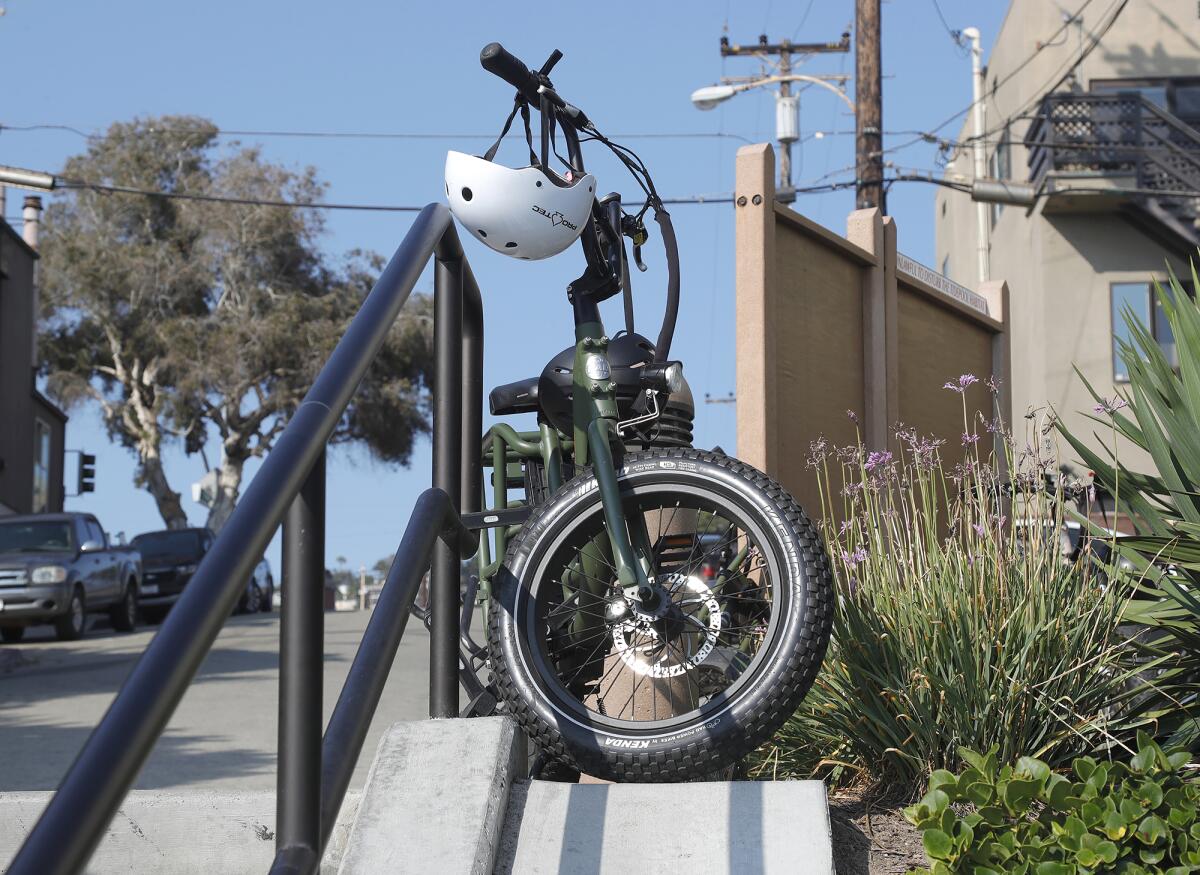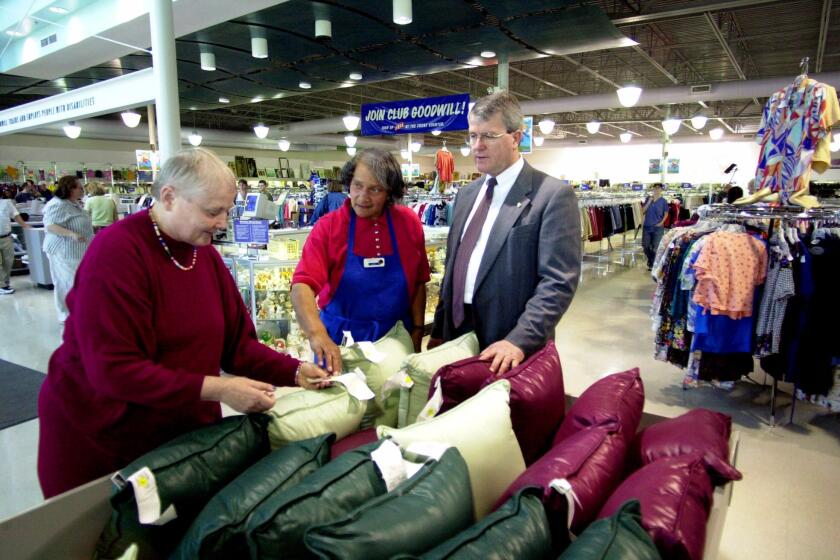Commentary: Will Costa Mesa’s future zip in on two wheels?

It is hard to get around Costa Mesa without a car. We all have important places to go: a job, the store, a friend’s house, the kids’ playdate, a night on the town. So if you can’t drive (or just don’t want to), consider your options. Buses run infrequently, Ubers are increasingly expensive and much of the city is too spread out to walk. If your opportunities are limited by a reasonable commute, those opportunities shrink radically without a car. But now, there might be another option. E-bikes have exploded in popularity, and they are bringing much needed transportation diversity to Costa Mesa’s streets.
These days you can’t drive in Costa Mesa without seeing an e-bike zipping by in a bike lane or on a sidewalk. Electric-powered bicycles, or e-bikes for short, use a battery-powered motor to assist pedaling. By taking physical demand out of the equation, e-bikes open up biking to new riders and empowers them to haul heavy loads, such as groceries, schoolbooks or even children, up hills or over long distances. So it is no surprise e-bikes are becoming remarkably popular. They solve most of the problems people have with conventional cycling, offer point-to-point mobility, cost almost nothing to operate and are environmentally friendly. And if you want a workout, you can just switch off the motor.
Because you can ride farther, faster and take more stuff with you, an e-bike makes short errands easier than driving. Cyclists never have to circle lots to find parking or stop at the gas station. But e-bikes can be more than just a fun get-around for their owners: they have the potential to be powerful mobility enhancers for the entire city, even for those who still choose to drive. When errands, commutes and other necessary trips taken on e-bikes replace the same trips taken by cars, mobility improves for everyone. Fewer cars on the road means less traffic, less pollution, less wear and tear on our infrastructure, and safer streets. A meaningful alternative will free up road space for the trips that only cars, trucks and buses can take. The traffic that remains will flow more smoothly, and pedestrians will breathe easier.
Goodwill of Orange County marks National Disability Employment Awareness Month with a recommendation that Orange County businesses consider adding people with disabilities to their staffs.
But putting more e-bikes on the road will take some getting used to. There is no denying that e-bikes are — at present — an awkward fit on Costa Mesa’s roads. Like conventional bicycles, the law expects e-bikes to ride in the street like a car without the protection of 1,200 pounds of steel framing. Self-preservation forces many riders to the sidewalk, but their speed makes them poor companions for pedestrians. As e-bikes empower a new generation of cyclists to take to the streets, ambiguous or absent traffic enforcement — for cyclists, motorists and pedestrians alike — may find some of them making up their own rules.
Conflict feels inevitable. But it doesn’t have to be: When a new technology provides an undeniable benefit to citizens, smart cities find ways to adapt. Long ago, the arrival of cars in cities built for pedestrians and horses left drivers looking for parking, fuel, signage and smooth streets. But instead of rejecting cars, we installed parking lots, traffic signals, gas stations and asphalt, and we rewrote the rules of the road to suit them. Not everyone was on board; some complained that “dangerous” cars and their “elitist, reckless” drivers hardly deserved such accommodation. But those early drivers didn’t receive those benefits because they deserved them — in fact, early drivers were routinely awful — but rather because city leaders recognized that the mobility provided by cars dramatically improved our quality of life.
Now, e-bikes offer a similar opportunity. And again we must adapt, because a return to the status quo is unacceptable. Finding room for cars was the right thing to do in the 1920s, but car dominance is holding Costa Mesa back in the 2020s. Thankfully, opening the city to e-bikes will be much cheaper and easier than constructing highways. Dedicated and protected bike lanes, bike-specific signals and commuter paths take up little space and help to separate cars, cyclists and pedestrians. Some of these improvements have already been built, and more are included in the city’s farsighted Active Transportation Plan. Bike racks and lockers are cheap and easy to install, and a parked bike takes up a fraction of the space of a parked car. And bike sharing, which has never been tried in Costa Mesa, would require very little in terms of new infrastructure to support.
When paired with comprehensive cycling infrastructure, e-bikes have the potential to significantly increase the number of trips taken by bicycle. And more cyclists will take more cars off the road, improve mobility for everyone, and make for happier and healthier citizens. Blessed with flat roads, perfect weather and an active population, Costa Mesa has every reason to become a biking city. With e-bikes, we can get there fast — and not even break a sweat.
Jenn Tanaka is a Costa Mesa resident and a board member of the Costa Mesa Alliance for Better Streets (cmabs.org).
All the latest on Orange County from Orange County.
Get our free TimesOC newsletter.
You may occasionally receive promotional content from the Daily Pilot.




